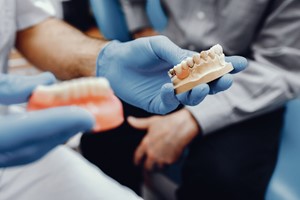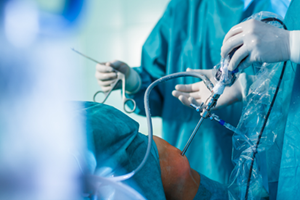Orthopedic devices have come a long way since the early days of plaster casts and braces. Today, advanced technologies and materials are being used to create a wide range of devices that help people with musculoskeletal conditions to recover from injuries, manage chronic conditions, and improve their quality of life. In this article, we will explore some of the latest trends, inventions, and news in the field of orthopedic devices.
3D Printing in Orthopedics
One of the most significant developments in orthopedic devices is the use of 3D printing. 3D printing has revolutionized the way orthopedic devices are made, allowing for the creation of custom devices that are tailored to the needs of individual patients. Orthopedic surgeons can now use 3D printing technology to create implants, prosthetics, and other devices that fit perfectly and are designed to meet the unique needs of each patient.
The benefits of 3D printing are numerous. By creating custom devices, orthopedic surgeons can reduce the risk of complications and improve patient outcomes. The use of 3D printing technology also allows for the creation of complex shapes and structures that were previously impossible to manufacture. Furthermore, 3D printing can significantly reduce the cost of producing orthopedic devices, making them more affordable and accessible to patients.
Wearable Technology in Orthopedics
Wearable technology is another trend that is transforming the orthopedic device industry. Devices such as smartwatches, fitness trackers, and activity monitors are now being used to monitor vital signs, track physical activity, and provide real-time feedback to users. Orthopedic devices such as knee braces and foot orthotics are also being developed with sensors and other technology to monitor movement, provide support, and track progress during rehabilitation.
Wearable technology has the potential to improve patient outcomes and reduce the need for in-person visits. By tracking patients' movements and providing real-time feedback, wearable devices can help patients to recover faster and more effectively. Furthermore, wearable devices can provide orthopedic surgeons with valuable data that can be used to improve patient care and outcomes.
Robotic Surgery in Orthopedics
Robotic surgery is becoming increasingly common in orthopedics. Robotic-assisted surgeries allow for greater precision and accuracy during procedures, leading to better outcomes for patients. With robotic surgery, orthopedic surgeons can perform complex procedures with greater ease and speed, reducing the risk of complications and shortening recovery times.
Robotic surgery can also reduce the need for invasive surgery, which can result in faster recovery times and less pain for patients. Furthermore, robotic surgery can be performed with smaller incisions, reducing the risk of infection and scarring.
Implant Innovations in Orthopedics
Implant technology is also advancing rapidly in the field of orthopedics. New materials, designs, and coatings are being developed to improve the durability, longevity, and performance of implants. For example, 3D-printed titanium implants have been developed that mimic the natural structure of bone, promoting faster integration and reducing the risk of complications.
Other implant innovations include the use of smart implants that can monitor and adjust to changes in a patient's body, reducing the need for follow-up surgeries. Additionally, implant coatings are being developed that can reduce the risk of infection and promote faster healing.
Telemedicine in Orthopedics
Telemedicine is transforming the way orthopedic care is delivered. With telemedicine, patients can connect with their orthopedic providers remotely, reducing the need for in-person visits. This is especially beneficial for patients who live in remote areas or who have mobility issues. Telemedicine also enables orthopedic providers to monitor patient progress more closely, ensuring that they receive the care they need, even if they are unable to visit a clinic or hospital.
Telemedicine has become increasingly popular during the COVID-19 pandemic, as it allows patients to receive care while minimizing the risk of exposure to the virus. Many orthopedic clinics and hospitals now offer telemedicine appointments, and it is likely that telemedicine will continue to play a significant role in the delivery of orthopedic care in the future.
Personalized Medicine in Orthopedics
Personalized medicine is an emerging trend in orthopedics that involves tailoring treatment plans to the unique needs of individual patients. By using genetic testing and other advanced diagnostic tools, orthopedic providers can identify patients who are at higher risk for certain conditions or who may respond better to specific treatments.
Personalized medicine can lead to better outcomes for patients by ensuring that they receive the most effective treatments for their individual needs. It can also reduce the risk of complications and improve patient satisfaction.
Regenerative Medicine in Orthopedics
Regenerative medicine is an exciting area of research in orthopedics that involves using stem cells and other biological materials to stimulate the body's natural healing processes. Regenerative medicine holds great promise for the treatment of conditions such as osteoarthritis, tendon and ligament injuries, and cartilage damage.
In recent years, several regenerative therapies have been developed for orthopedic conditions, including platelet-rich plasma (PRP) injections and stem cell therapy. These therapies have shown promising results in clinical trials, and they have the potential to revolutionize the way orthopedic conditions are treated.
Orthopedic devices are continually evolving, with new technologies, materials, and treatment options emerging all the time. From 3D printing to regenerative medicine, these developments have the potential to improve patient outcomes, reduce the risk of complications, and make orthopedic care more accessible to patients around the world. As the field continues to advance, it is likely that we will see even more exciting developments in the years to come.













